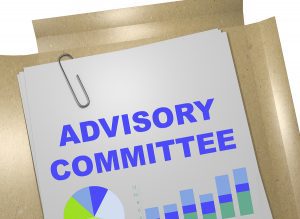 Although federal agencies can be reticent to convene advisory committees (in part due to restrictions posed by the Federal Advisory Committee Act), municipal governments routinely employ citizens advisory committees for issues ranging from parks and recreation and solid waste management to business recruitment and retention, libraries, and the arts. Well designed citizens advisory committees can provide focused and effective input to decision makers over time and on a variety of issues.
Although federal agencies can be reticent to convene advisory committees (in part due to restrictions posed by the Federal Advisory Committee Act), municipal governments routinely employ citizens advisory committees for issues ranging from parks and recreation and solid waste management to business recruitment and retention, libraries, and the arts. Well designed citizens advisory committees can provide focused and effective input to decision makers over time and on a variety of issues.
There is a temptation to populate an advisory committee with folks that are sympathetic to the agency’s perspectives and to allow people to serve on citizen panels for extended periods of time. Both are mistakes!
It is tempting to want to design a citizens advisory committee with people who will provide advice that we want to hear. If used for a public participation purpose, however, a citizens advisory committee should represent the entire population of people served by the entity convening the panel. At their best, citizens’ panels provide insight to the convener related to the full spectrum of citizens’ perspectives, values, and interests. Through effectively facilitated deliberation, the panel can discover creative ways to resolve seemingly intractable issues. Ideally, a diversity of perspectives will provide the most value. Consider professional backgrounds, economic status, and geographic distribution in addition to age, gender, and ethnicity. How could a group convened to provide advice on city-wide transportation issues provide well-rounded advice if they all hailed from the same part of town, for example?
One of the other temptations is to allow people to serve on a citizens advisory committee for extended periods of time. Admittedly, it can take time to bring committee members up to speed so they are adequately knowledgeable to work together to develop solid, well-informed advice. If they sit on the committee for too long, however, they will no longer represent citizens’ perspectives on the topics under consideration. Well-designed advisory boards typically entail term limitations and an orderly rotation of membership. Consider two-year terms, a maximum of three terms, and 1/3 rotation every year for a board of 12 or more people. That would allow two or more fresh faces per year (not everyone will want to serve multiple terms). If it is hoped that the panel will represent the entire community, having a diversity of experience levels with the topics under consideration will maximize the group’s effectiveness.
One additional thing you should probably consider – willingness to commit to being a good committee member. Many committees are populated by people just wanting to add a bragging point to their resumes. Others are stymied by people who aren’t willing to consider other people’s perspectives. Consider asking applicants to make two commitments: 1) to prepare for and attend all meetings and 2) to be willing to work with others who have different perspectives to develop advice.
Well-designed advisory committees can provide thoughtful, well-informed advice. Take the time to think through the design of your committee; the time will be well spent.
Author: Wendy Lowe
